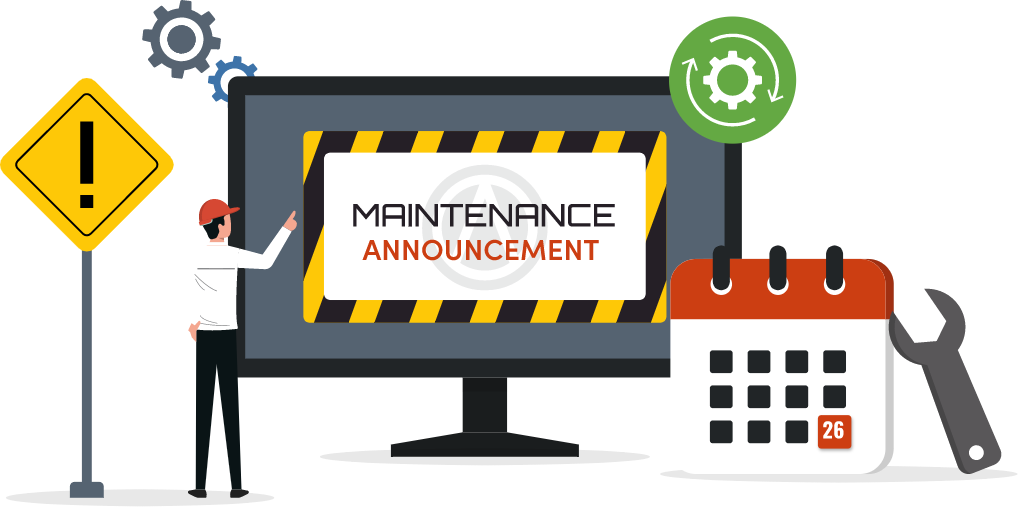What details should be included in an incident report?
Reports should capture the date, time, location, people involved, witnesses, type of incident, and a factual description. Supporting evidence such as photos, video footage, medical notes, or witness statements should also be included when available.
The Essential Incident Reporting Checklist for Restaurant Owners
Overview
Running a restaurant is fast-paced, people-driven, and filled with moving parts. From hot kitchens to crowded dining rooms, it's no surprise that incidents happen. While no one likes to think about these situations, documenting them properly is essential.
Incident reporting isn't just about filling out paperwork - it's about protecting your team, your guests, and your business. In fact, the National Safety Council notes that workplace injuries cost U.S. employers over $167 billion annually, with food service ranking among the higher-risk industries. A single unreported incident can lead to liability issues, compliance fines, or even lawsuits down the road.
For restaurant owners, having a clear, consistent reporting process brings peace of mind. It ensures that everyone knows what to do when something goes wrong, reduces confusion, and helps you make better decisions about safety and training. More importantly, it signals to your staff that you take their well-being seriously.
Step 1. Identify the Incident Clearly

The first step in effective incident reporting is knowing exactly what qualifies as an incident. In a restaurant, this can range from minor injuries to serious accidents - or even situations that could have led to harm but didn't. These near-misses are just as important to capture because they often reveal risks that, if left unaddressed, may result in bigger problems later.
Common incidents in restaurants include -
1. Customer-related issues - slips, trips, or allergic reactions.
2. Employee-related issues - burns, cuts, strains, or falls in the kitchen.
3. Food safety concerns - contamination, spoilage, or improper storage.
4. Property or equipment damage - broken glassware, malfunctioning equipment, or delivery accidents.
5. Security incidents - theft, vandalism, or disruptive behavior.
Being clear about what should be reported eliminates confusion among staff. If employees aren't sure whether something "counts," they're more likely to skip reporting altogether. This creates blind spots in your safety records and increases risks for everyone.
As the restaurant owner or manager, you should define your reporting scope and make it visible - post guidelines in the back office or include them in your employee handbook. Encourage staff to report any incident, no matter how small, with the reminder that it's not about assigning blame but about keeping the workplace safe and the business protected.
Clarity at this stage sets the tone for the entire reporting process. When everyone understands what incidents need to be logged, your records become more complete, your risk management more effective, and your workplace culture stronger.
Elevate Food Safety, Simplify Compliance!
Experience Seamless Food Safety with Altametrics!
Step 2. Record Key Incident Details Immediately
Once an incident occurs, timing is everything. The longer you wait to record the details, the more likely important facts will be forgotten, misinterpreted, or disputed. Memory fades quickly, especially in a busy restaurant environment where staff move from one task to the next. For this reason, incident reports should be completed as soon as possible - ideally within the same shift.
At minimum, your report should capture -
- Date and time of the incident.
- Exact location (kitchen, dining area, storage room, entrance).
- People involved (employee, customer, or vendor).
- Names of witnesses who can provide additional accounts.
- Type of incident (injury, property damage, food safety issue, theft).
- Detailed description of what happened, written factually without assumptions.
It's also important to designate who is responsible for completing reports. In many restaurants, a supervisor or manager oversees the process, but front-line employees should be trained to provide initial details if they're first on the scene. This ensures nothing gets overlooked.
Accuracy matters. Reports filled with vague or incomplete details don't stand up well if reviewed by insurance companies, regulators, or legal representatives. A thorough, immediate report not only protects your business - it also ensures that staff and customers feel their safety is taken seriously. Over time, consistent documentation helps you identify recurring problems and make smarter operational improvements.
By treating incident reporting as a time-sensitive priority, you set a standard of professionalism and accountability in your restaurant.
Step 3. Collect Evidence and Documentation
Recording the facts is a strong first step, but your incident report becomes far more reliable when supported by evidence. In a restaurant setting, this often means gathering tangible proof that validates what happened and provides context for decision-makers such as managers, insurers, or regulatory agencies. Evidence also protects you if a claim or dispute arises later.
The most common forms of documentation include -
- Photos or videos of the scene, equipment, or any hazards involved.
- Security footage from cameras, if available.
- Physical items related to the incident (e.g., broken glass, faulty equipment).
- Medical notes or first aid records if treatment was provided.
- Witness statements, ideally written and signed, to corroborate details.
Accuracy is key. Evidence should be factual, clear, and free of assumptions or personal opinions. For example, instead of writing "the employee was careless," the report should state - "The employee touched a hot pan without gloves and sustained a minor burn." Neutral language ensures the focus remains on the event itself, not on blame.
From a data-driven perspective, incidents supported by evidence are resolved faster and more effectively. According to insurance industry reports, claims with proper documentation are settled up to 40% more quickly than those without supporting proof. For a restaurant owner, that means fewer delays, reduced costs, and less disruption to daily operations.
By building a habit of collecting and attaching evidence to every report, you strengthen your records, improve your credibility, and create a safer, more transparent workplace culture.
Step 4. Store Reports Safely and Accessibly

Completing an incident report is only half the job - the other half is ensuring that it's stored properly. A report that gets misplaced, damaged, or buried in a stack of papers isn't much help when you need it for an insurance claim, a regulatory inspection, or an internal review. Safe, accessible storage is essential for compliance, accountability, and long-term protection.
Restaurant owners typically have two options - paper-based systems or digital reporting tools. Paper forms are inexpensive and easy to implement, but they require secure physical storage, such as a locked cabinet or office file system. They can also be harder to organize and retrieve, especially when dealing with multiple years of records.
Digital systems, on the other hand, provide greater accessibility. Reports can be logged directly through a tablet, phone, or computer and stored in a cloud-based system. This makes retrieval faster and more reliable, particularly when you need records for audits or claims. Many platforms also offer search functions, timestamps, and automatic backups, which reduce the chance of errors or lost information.
Regardless of the method, accessibility must balance with security. Reports often contain sensitive information about employees, customers, or financial matters, so they should be stored in compliance with privacy standards. Limit access to managers or authorized personnel, and ensure backup systems are in place to prevent permanent loss.
Stay Compliant, Elevate Your Business!
Discover Altametrics for Effortless Compliance Management
Step 5. Escalate When Necessary
Not every incident can be handled internally. Some require immediate escalation to ensure proper follow-up, protect the business, and comply with external requirements. As a restaurant owner, knowing when and how to escalate is critical - waiting too long or failing to notify the right people can lead to legal issues, fines, or costly delays in claims processing.
Incidents that typically require escalation include -
- Serious injuries to staff or customers, especially those requiring medical treatment.
- Repeated or recurring issues that point to systemic problems.
- Food safety violations that could affect public health.
- Property damage that impacts operations or requires insurance coverage.
- Regulatory breaches, such as OSHA-reportable injuries or fire safety hazards.
Escalation often involves notifying different parties- internal leadership, corporate if applicable, your insurance provider, or regulatory bodies. For example, OSHA requires certain workplace injuries to be recorded within seven days, and in severe cases (hospitalizations, amputations, or fatalities), they must be reported within 24 hours. Missing these deadlines can result in penalties and damage your credibility as an operator.
Clear communication is essential. Staff should know exactly who to notify and when. Having a structured chain of command prevents confusion in stressful situations. Equally important, escalation should be documented - record when the issue was reported, who was contacted, and what actions were taken.
By treating escalation as a defined step in your reporting process, you demonstrate professionalism and accountability. It reassures staff and customers that serious issues are handled responsibly, and it ensures your restaurant remains compliant and financially protected.
Step 6. Review and Act on Incident Trends
Filing individual incident reports is important, but their true value comes when you look at the bigger picture. Over time, incident reports form a data set that reveals trends, recurring issues, and potential risks within your restaurant. By reviewing these reports regularly, you can shift from simply reacting to incidents to preventing them altogether.
For example, if multiple reports show employees burning themselves on the same fryer, that points to a pattern. The solution might be as simple as retraining staff, purchasing protective gloves, or servicing the equipment. Similarly, repeated slips in one area of the dining room may indicate the need for better floor mats, signage, or cleaning protocols.
This process isn't just about safety - it's also about cost savings. According to the National Safety Council, the average workplace injury costs employers over $40,000 in direct expenses. Preventing even one recurring issue can have a significant financial impact on your bottom line.
To make this process consistent, schedule regular reviews of incident reports - monthly or quarterly, depending on the size of your operation. Involve managers and supervisors in identifying patterns and brainstorming corrective actions. Document the changes made so that future reports can measure whether improvements are effective.
When you treat incident reports as a tool for learning and prevention, you foster a safer workplace, reduce operational disruptions, and demonstrate to staff that their input leads to real improvements. This builds trust while strengthening your restaurant's long-term resilience.
Make Incident Reporting a Standard Practice
Incident reporting may feel like an administrative burden at times, but in reality, it's one of the most powerful tools a restaurant owner has for protecting people and strengthening operations. When reports are completed consistently, stored properly, and acted upon, they serve as both a shield and a guide. They shield your business from liability, regulatory fines, and insurance disputes. At the same time, they guide you toward safer processes, smarter training, and a stronger culture of accountability.
The key is making incident reporting a standard practice rather than an occasional reaction. Employees should see reporting as part of the restaurant's daily rhythm - just as important as logging temperatures, counting inventory, or closing out the register. By setting clear expectations, training staff on what to document, and reinforcing the "why" behind reporting, you create a culture where safety and responsibility are non-negotiable.
Consistency matters. A single overlooked report might seem minor in the moment, but over time, gaps in documentation can expose the business to unnecessary risk. On the other hand, a complete and well-maintained record provides peace of mind, showing that you've done everything possible to protect employees, customers, and your investment.
Ultimately, incident reporting isn't about blame - it's about prevention, protection, and progress. By implementing the checklist and making it part of your restaurant's daily operations, you set your team up for success while keeping your business compliant, resilient, and ready to grow.
Must-Read Content

How to Build an Effective Incident Management Process in Your Restaurant

The Hotelier's Guide to Writing Effective Incident Reports











